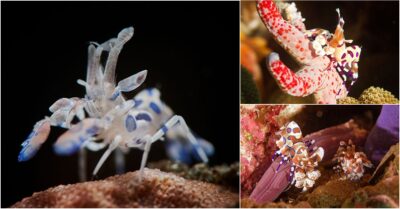Water is one of the most important factors – not only in your garden but on this planet. Life as we know it would not be possible without this vital element. To explore the issue of how to use water more wisely in your garden, let’s take a look at some common watering mistakes. By identifying the mistakes, we can find ways to do things better, and manage our gardens in more sustainable ways.
1. Not Collecting Rainwater
If you have a vegetable garden, you need to collect rainwater. Growing vegetable plants require a lot of water, and rain is free. It’s a waste not to harvest rain to use in your garden.
Setting up a rainwater harvesting system doesn’t have to be complicated. Most gardeners collect the water that drains off the roof of their home or shed. Chances are your home has a gutter in place; you might need a rainwater diverter if the water drains underground.
The process of harvesting rainwater might sound complicated, but it’s not. It’s worth the work. If you’re using the water from your hose to water your plants, it’s going to increase your bill each month. Our bill increased by $50 per month! Rainwater might save you a lot of money.
You cannot drink this water, but it’s perfect for watering plants. Never try to drink rainwater; stagnant water contains harmful bacteria for humans that make it unsafe for consumption unless it went through filtration.

2. Using Mains Water When Rainwater is Available
You would be surprised by how often I have seen people watering with a hosepipe attached to the mains even when they have a rainwater harvesting system in place, and rainwater available.
You may find it easier and more convenient to use a hose attached to the mains water supply when watering needs are high. But if it is easier, this is just a sign that you have not yet perfected methods for collecting and using rainwater where you live.
Many people seem to add a rainwater tank to collect water from their home, but then give no thought to how that water will make it to where it is needed.
It is important to think not only about how you will collect rainwater, but also how you will store and direct it efficiently and effectively when you come up with your plans.
A good rainwater harvesting system will not necessarily require you to draw of water manually and water by hand with a watering can. A well designed system can be just as easy and convenient as using a pressurized mains supply. You just have to choose the right option or options for where you live.
Water from a rainwater tank in an area with high enough rainfall can be pumped to allow sufficient pressure to water larger gardens with a hose. (And solar powered pumps offer a more eco-friendly solution.) But to reduce the amount of water you use, consider giving up your watering can and hose pipe altogether.
3. Watering By Watering Can or Hosepipe When Other, Better Options Are Available
You may be wondering how on earth you can provide water for your plants without using a watering can or hose. But actually, there are a range of solutions that you can consider.
Watering with a watering can is often very time consuming and can be somewhat wasteful of water if you do not direct the water very effectively.
Watering with a hose may be easier, but it is even more wasteful. Watering with a hose (or overhead sprinklers) uses a lot more water than is really necessary.
Instead, consider installing drip irrigation.
This involves using a leaky pipe that slowly feeds water to the soil around your plants. It can be installed on the soil surface, but may be more effective if it is buried just below the ground, taking water to where it is really needed.
Another option is to direct the rainwater you harvest into specially prepared growing areas called wicking beds.
Wicking beds are raised beds with reservoirs of water built into the base. Water is drawn up from the base through capillary action and becomes available for plants placed on top.
If we are talking about making sure that annual fruits and vegetables get the water they need then this is an interesting option to consider.

4. Watering at the Wrong Time of Day
Technically, you can water your plants anytime during the day, but that doesn’t mean it’s what is best for your plants.
The best time to water plants is in the morning or the evening.
Watering in the morning helps your plant get ready for the day and gives the roots time to absorb the needed moisture. It’s possible to water in the evening, giving the water time to absorb and rest in the soil, but if you water the foliage, it increases the risk of rot and fungal diseases. Make sure you keep water off the foliage.
You should avoid watering in the afternoon, especially in the middle of the summer. The heat is at its peak, increasing the amount of evaporation that takes place. Your plants won’t have enough time to absorb the much-needed moisture, and any water on the foliage increases the risk of sunburns.

5. Thinking All Your Plants Need the Same
One of the most common watering mistakes made is treating all of your plants the same and thinking they need the same things. This applies to more than just water; plants have different requirements, such as light, temperature, humidity, and moisture.
For example, a cactus requires a different amount of water than a tomato plant. A cactus will survive long periods without water, but if you forget to water your tomato plants for three weeks, it’s not going to survive.
Make sure you learn what each of your plants requires before you start watering. Overwatering or underwatering is a surefire way to kill your plants.

6. Not Watering Your Plants Enough
Everyone knows that plants need water; you learned this in elementary school when you studied what plants need to survive. Water is one of the critical elements, so not providing your plants with enough water is one of the biggest watering mistakes you make.
If your plants don’t receive enough water, a few signs that your plants might exhibit include:
- Wilting leaves
- Fading colors
- Wrinkled or dried leaves
- Yellowing leaves
- Defoliation
- Plant death
Gardeners should have a watering schedule. It’s easiest if you have irrigation set up for your garden, but if not, make sure you check the soil daily to see if the plants need to be planted. Plants typically don’t need to be watered daily unless the temperatures are higher than average.
Luckily, if your plant is suffering from drought, saving it is possible. The first step is to water the plant abundantly. You can submerge the container in a bucket of water until no more bubbles appear. If your plant grows in a garden bed, soak the base of the plant until the soil stops absorbing the water.

7. Watering Too Much
Most people think that not giving plants enough water is a problem, and it is, but overwatering is one of the most common watering mistakes that cause plants to die. It’s best to let the soil dry out between watering rather than watering daily.
Two problems exist with overwatering.
First, the water soaks into the soil, existing in all of the spaces between the particles, pushing out oxygen that your plants need. Roots need oxygen to breathe, or they’ll die.
Another problem with overwatering is that it increases the risk of fungal diseases or nematodes. Fungal diseases love saturated roots; your plant might suffer from root rot. All kinds of problems come from watering plants too much.
The signs of overwatering are similar to the symptoms caused by a lack of water. That’s why many new gardeners start to water more, thinking they’re fixing the issue when they’re making it worse.
A few signs of overwatering include:
- Fading leaves
- Yellowing leaves
- Defoliation
Unfortunately, fixing an overwatering plant isn’t as easy as fixing a plant suffering from a lack of water. If the problem plant is in a container, take it out of the pot and wrap the root ball in a newspaper, absorbing the extra water. When the paper is soaked, repeat this until you’ve removed as much as possible.
Overwatering washes out nutrients that your plant needs, so you need to feed your plant more. You’ll have to watch for the development of fungal disease and treat it if one appears.

8. Watering at the Same Frequency
You should water your plants regularly, but that doesn’t mean you should water your plant the same all of the time. There are times when you need to water more frequently or less often. You have to adapt your watering schedule.
Here are some times when you should increase your watering frequency:
- When the temperatures increase above average, your plants need more hydration.
- If there are periods with less rain, you need to make up for that with more regular watering.
- Strong winds dry out plants faster.
- During the flowering and fruiting phases, plants typically require more water. This is true for plants like tomatoes, squash, cucumbers, and beans.
- Root-bound container plants need more watering.
- Plants growing in a terra cotta pot rather than a plastic one need more water because plastic isn’t porous like terra cotta.

9. Using Containers Without Drainage Holes
Not all containers sold for planting have drainage holes at the bottom. If the container you buy doesn’t have holes, your plants are more likely to face a problem with overwatering because the water has nowhere to go.
This problem is fixable. Always check the bottom of your containers, and if you love a pot that doesn’t have holes, use a drill to put a few in the bottom of the pot.
Another common watering mistake is forgetting to remove the saucer underneath of the plant. While the saucer stops the water from drenching your table or floor, it causes the plant roots to rot. The only time it’s recommended to leave the saucer in place is when the plants need humidity.

10. Not Watering at the Base of the Plants
When I began gardening, I assumed everyone watered with an overhead hose or a watering can, but I learned that this isn’t the best watering method. When you water with a hose, it’s more wasteful, and it comes with a serious risk.
Diseases.
Yes, overhead watering is problematic because it causes soil to splash onto the leaves of your plants. It’s one of the most common ways that soil-borne diseases infect your plants. You might not be able to stop the rain, but you can stop overhead watering.
One of the most common watering mistakes is not watering the base of the plant, which is what experts recommend. Installing drip irrigation is a fantastic idea and delivers the water exactly where your plants need it the most.
Drip irrigation involves using a hose with holes that slowly deliver water to the soil around your plants. It can be installed on the soil surface or buried below the ground.
The best way to deliver water to your plants is at the base, not overhead.

11. Forgetting to Mulch Around Your Plants
Mulch serves a more serious purpose in your garden than making it look nice. People confuse landscape mulching with mulching around vegetable plants. They’re different.
When you lay mulch around the front of your house for landscaping, you want it to look nice. You pick a wood chip color that looks nice against your home. This mulch suppresses weeds and creates defined garden beds where you plant flowers and perennials.
Mulching around vegetable plants is different.
Typically, you’ll use organic mulch, like grass clippings, compost, or shredded leaves. Over time, the mulch decomposes into your garden soil, adding needed nutrients. It also helps the ground retain more moisture, reducing how much water you need to provide.
Forgetting to lay mulch around your plants is a big watering mistake. Mulch holds moisture in the soil and regulates soil temperature, reducing evaporation.

Thank you for spending time to see this article of Ideassimple about 11 Watering Mistakes Harm Plants That You Need To Know. Please give us a like, comment or share if you find the article good and meaningful. Have a good day!











